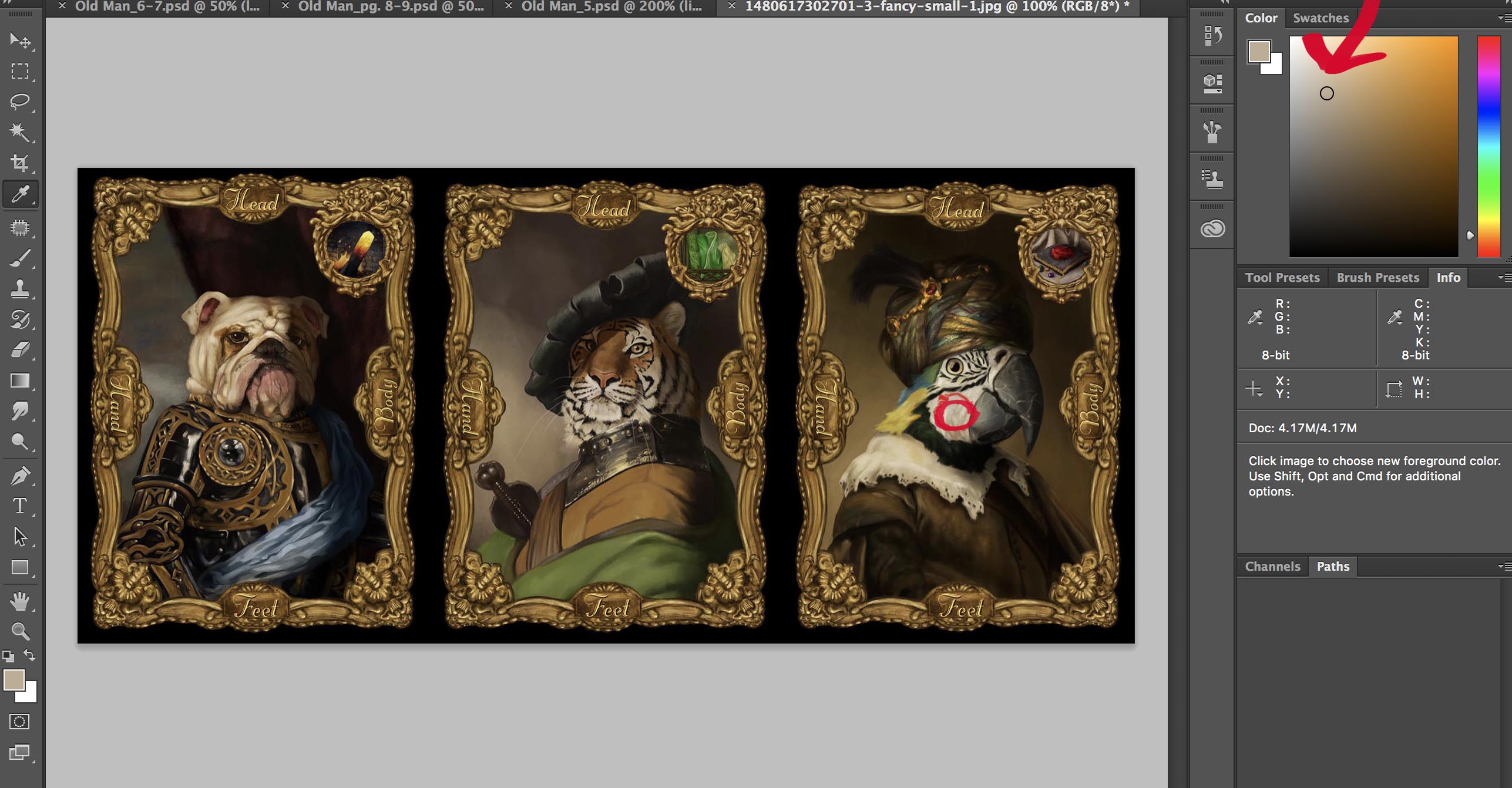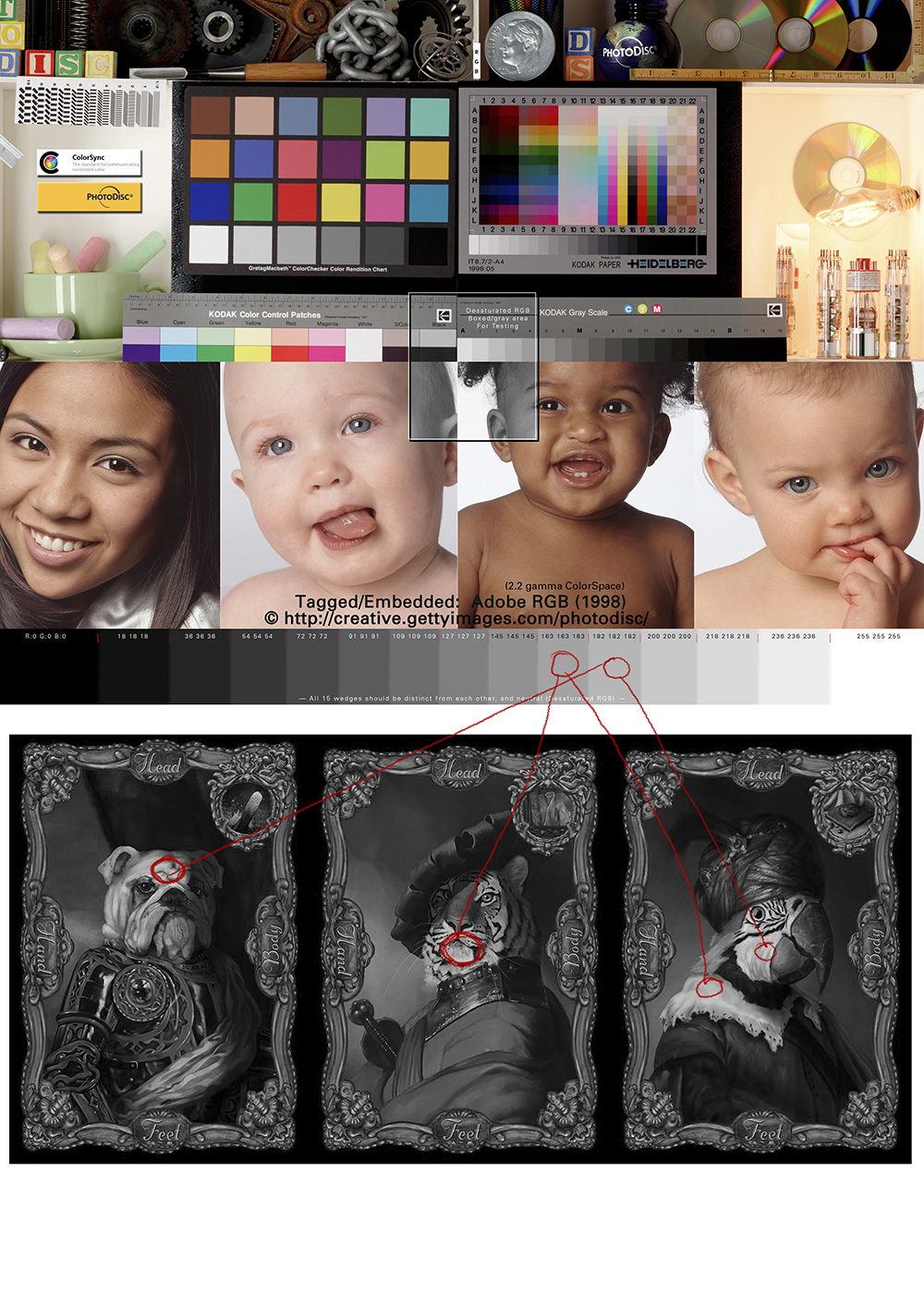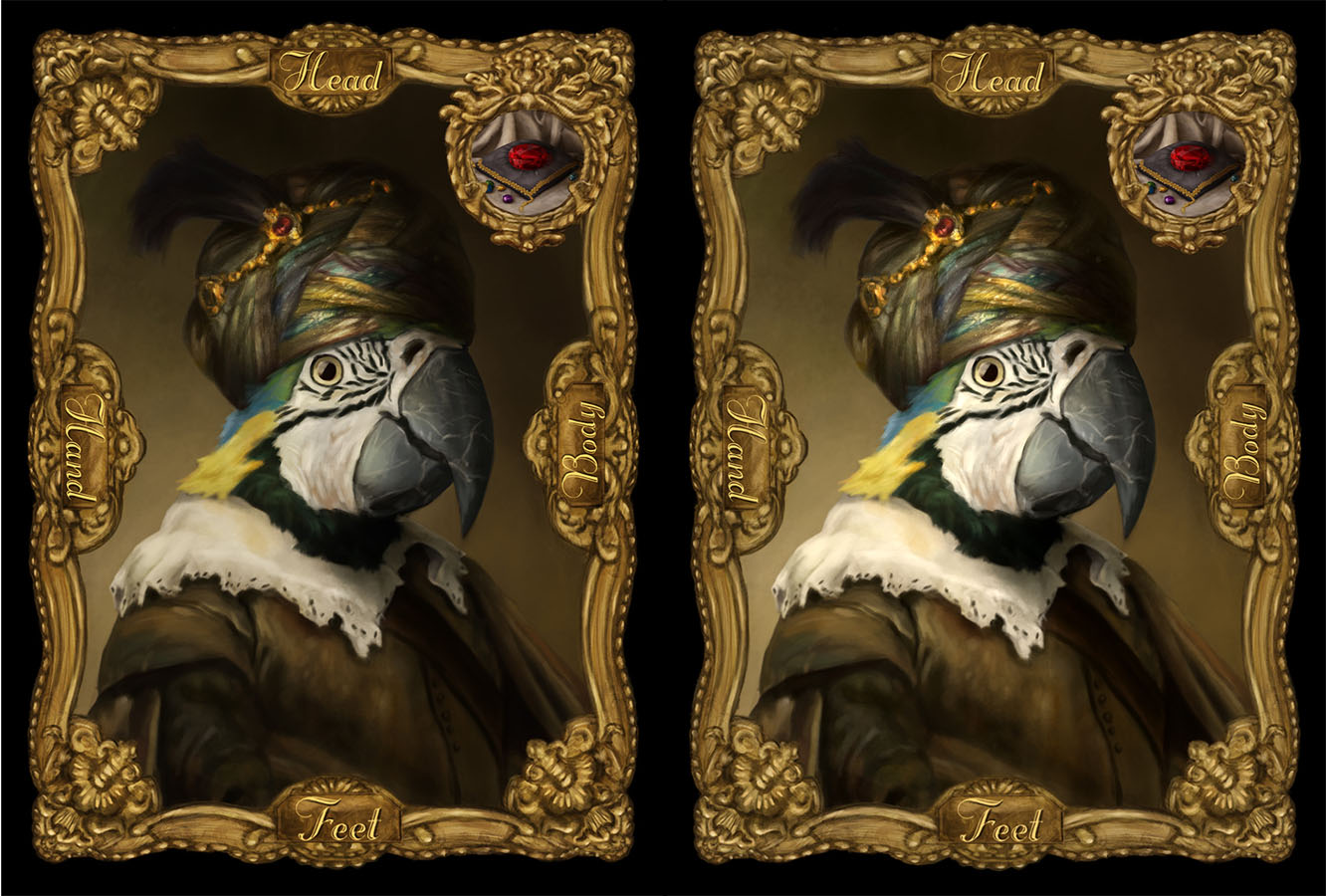Parrot
-
Here are 3 side-by-side. I didn't go quite as hot with the lights as @Lee-White had but that might be due to my monitor calibration.
I added an orange overlay layer on all three images to try and tie them all together.

Not sure if I need to push the dark values on the tiger and dog (maybe more so the tiger). I am a little worried about them printing more dark & contrasty than my monitor shows.
-
These look good, but they are really dull in terms of value. Your monitor may need some pretty good tweaking. If you look at this image, you can see where I sampled on the parrots cheek. Look in the color palette box and see how dark this value actually is. Your brightest bright is sitting at about a 25% tone. Even if you don't go to full white, you have about two values you can lighten to in order to get a full value range.

-
@Lee-White that's one of the things that really frustrates me--it seems like there is always fight between how it looks on my monitor and everywhere else. Also: the image can change so much from monitor (correctly calibrated or otherwise) and actual print.
I am kinda hoping that, if I can get this game sold to a company, they have processes in place to deal with this. I feel pretty lost.
Maybe I need a spyder calibrator or something similar?
-
A spyder calibrator is a good place to start. The other thing is just looking at your photoshop file next to a color/value test image. You will see here if I change your image to greyscale how dark your images are in the value scale (note: you should see ALL 15 gradient changes in that lower greyscale bar). If you don't see all 15 greyscale steps, your monitor needs to be adjusted. Your lightest values are in the 5th and 6th greyscale box. They need to be in the first or second box to have a full value range.
Also, make sure your color profile is AdobeRGB 1998. That is a very stable profile and works for most monitors.
Many times just having a document like this open next to your image while you work can really clean up value problems.

-
@Lee-White Sweet--I'm guessing I can make it greyscale and adjust my levels then turn off greyscale. At least, that would be a really easy fix if that works.
Not sure what color profile I have--I'll see if I can change it to AdobeRGB 1998. There are a whole lot of PS things I have little to no idea about other than a vague sense that there are "file" things I should be aware of. For example: I've only fairly recently started making sure I have high enough DPI and on these animals I've gone to a 16-bit file thingy to prevent banding (especially in the darker areas of the image). Also: I used to paint in CMYK under the assumption that this was the more "true color" way to create.
-
So until I train my eye I'll definitely be using that grayscale.
Here is what I came up with:
First version / New lighter version

Everything in my brain is saying: too blown out.
But @Lee-White is right, the grayscale don't lie. -
@mattramsey looks great. Reminds me of the project I had in Chris Oatley's Magic Box Class. Really great work. Cheers
-
@Kelly-Lane that's exactly what it is. I did the Tiger in that course.
-
Much better!!! great work. : )
-
@mattramsey Matt I am so glad you took Lee's advice to heart and went in and kept pushing the values. This latest update has so much more visual impact and is so much more dynamic now. Excellent work!